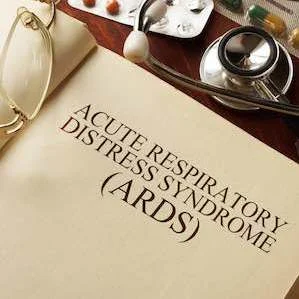The consensus definitions of acute respiratory distress syndrome (ARDS) mainly rely on feasible clinical criteria, which help to group patients together for inclusion in clinical trials and for clinical management. This generates clinical and biological differences in observable patient characteristics. These differences could be used to group ARDS patients, referred to as ARDS subphenotypes, according to an article in Intensive Care Medicine.
Identifying ARDS subphenotypes who either have a higher risk of mortality (prognostic enrichment), or differences in treatment responses and/or similar biological mechanisms that are modifiable (predictive enrichment) could enable stratified and/or precision medicine, writes Dr. Manu Shankar-Hari, School of Immunology and Microbial Science, Kings College London, with co-authors.
To date, two ARDS subphenotypes have been reported from five randomised controlled trials (RCTs) and one observational cohort study. Although all six studies report two ARDS subphenotypes, they differ in the biomarkers, clinical characteristics, and analytic approaches used. All RCTs used biomarker and clinical characteristics with latent class analyses to determine ARDS subphenotypes.
All RCTs report a hyperinflammatory subphenotype characterised by higher plasma concentrations of inflammatory biomarkers, greater vasopressor use, lower serum bicarbonate concentrations, and a higher prevalence of sepsis, when compared to the more common hypoinflammatory (Phenotype-1) subphenotype. In contrast, the observational cohort study used only biomarker data with clustering analysis to determine ARDS subphenotypes: the "reactive" subphenotype had higher mortality when compared to the "uninflamed" subphenotype and could be distinguished with a four-variable biomarker panel consisting of IL-6, interferon gamma, angiopoietin 1/angiopoietin 2, and plasminogen activator inhibitor-1.
Of note, the prevalence of reactive subphenotypes was twice as common in the observational cohort study compared to the hyperinflammatory subphenotypes in RCTs. It is not clear if this is due to selection bias inherent to randomised trials or to differences in biology. Hence, there is ongoing need to ascertain whether the reactive and hyperinflammatory subphenotypes are phenotypically and/or biologically similar.
As infection is the most common risk factor for ARDS, Dr. Shankar-Hari and colleagues say similarities of ARDS subphenotypes to sepsis subphenotypes should be explored. Prospective validation studies with a standardised approach to ARDS subphenotyping are needed and could be an international inception cohort study similar to the LUNG-SAFE study. These studies should determine similarities and differences between acute hypoxaemic respiratory failure and ARDS, alongside validating ARDS subphenotypes.
Dr. Shankar-Hari et al. explain: "This research should resemble a system biology research cycle and could begin with the hypothesis that there are at least two biologically distinct ARDS subphenotypes and that these ARDS subphenotypes have differences in risk of death and treatment response. There is a clinical need to identify biomarkers that are associated with treatment response, independent of group membership."
Image credit: iStock
References:
Shankar-Hari M, Fan E and Ferguson ND (2018) Acute respiratory distress syndrome (ARDS) phenotyping. Intensive Care Med, Dec 5. doi: 10.1007/s00134-018-5480-6. [Epub ahead of print
Latest Articles
acute respiratory distress syndrome, ARDS, phenotypes
The consensus definitions of acute respiratory distress syndrome (ARDS) mainly rely on feasible clinical criteria, which help to group patients together for inclusion in clinical trials and for clinical management. This generates clinical and biological d










